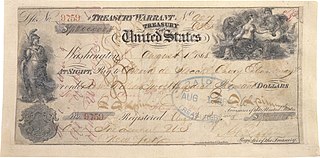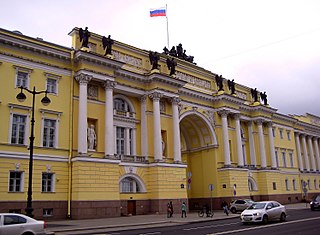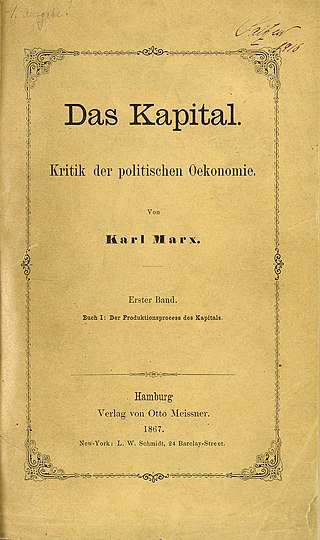| |||||
| Decades: | |||||
|---|---|---|---|---|---|
| See also: | |||||
Events from the year 1867 in Russia .
| |||||
| Decades: | |||||
|---|---|---|---|---|---|
| See also: | |||||
Events from the year 1867 in Russia .
| | This section needs expansion. You can help by adding to it. (July 2016) |
| | This section needs expansion. You can help by adding to it. (July 2016) |
| | This section needs expansion. You can help by adding to it. (July 2016) |

Austria-Hungary, formally known as the Austro-Hungarian Monarchy, often referred to as the Austro-Hungarian Empire or the Dual Monarchy, was a multi-national constitutional monarchy in Central Europe between 1867 and 1918. Austria-Hungary was a military and diplomatic alliance of two sovereign states, with a single monarch who was titled both Emperor of Austria and King of Hungary. Austria-Hungary constituted the last phase in the constitutional evolution of the Habsburg monarchy: it was formed with the Austro-Hungarian Compromise of 1867 in the aftermath of the Austro-Prussian War and was dissolved shortly after Hungary terminated the union with Austria on 31 October 1918.

The 1860s was a decade of the Gregorian calendar that began on January 1, 1860, and ended on December 31, 1869.

Franz Joseph I or Francis Joseph I was Emperor of Austria, King of Hungary, and the ruler of the other states of the Habsburg monarchy from 2 December 1848 until his death on 21 November 1916. In the early part of his reign, his realms and territories were referred to as the Austrian Empire, but were reconstituted as the dual monarchy of the Austro-Hungarian Empire in 1867. From 1 May 1850 to 24 August 1866, he was also president of the German Confederation.

The Russian colonization of North America covers the period from 1732 to 1867, when the Russian Empire laid claim to northern Pacific Coast territories in the Americas. Russian colonial possessions in the Americas are collectively known as Russian America. Russian expansion eastward began in 1552, and in 1639 Russian explorers reached the Pacific Ocean. In 1725, Emperor Peter the Great ordered navigator Vitus Bering to explore the North Pacific for potential colonization. The Russians were primarily interested in the abundance of fur-bearing mammals on Alaska's coast, as stocks had been depleted by overhunting in Siberia. Bering's first voyage was foiled by thick fog and ice, but in 1741 a second voyage by Bering and Aleksei Chirikov made sight of the North American mainland.

The Alaska Purchase was the United States' acquisition of Alaska from the Russian Empire. Alaska was formally transferred to the United States on October 18, 1867, through a treaty ratified by the United States Senate.

The Department of Alaska was the designation for the government of Alaska from its purchase by the United States of America in 1867 until its organization as the District of Alaska in 1884. During the department era, Alaska was variously under the jurisdiction of the U.S. Army, the U.S. Dept. of the Treasury, and the U.S. Navy. The area later became the District of Alaska, then the Territory of Alaska, then the State of Alaska.

The N. A. Rimsky-Korsakov Saint Petersburg State Conservatory is a school of music in Saint Petersburg, Russia. In 2004, the conservatory had around 275 faculty members and 1,400 students.

Alaska Day is a legal holiday in the U.S. state of Alaska, observed on October 18. It is the anniversary of the formal transfer of territories in present-day Alaska from the Russian Empire to the United States, which occurred on Friday, October 18, 1867.

Russian Turkestan was the western part of Turkestan within the Russian Empire’s Central Asian territories, and was administered as a Krai or Governor-Generalship. It comprised the oasis region to the south of the Kazakh Steppe, but not the protectorates of the Emirate of Bukhara and the Khanate of Khiva.

The South Russian Ovcharka or South Russian Shepherd Dog is breed of flock guardian dog. It developed in the areas of the Russian Empire and the Soviet Union that are now Ukraine and southern Russia, and is thought to derive from cross-breeding between local dogs of the Russian steppes and long-haired shepherd dogs brought to the area from Spain in the late eighteenth century together with Merino sheep. These may have been similar in appearance to the present-day Gos d'Atura Catala.

The Governing Senate was the highest legislative, judicial, and executive body subordinate to the Russian emperors, instituted by Peter the Great to replace the Boyar Duma and lasted until the very end of the Russian Empire. It was chaired by the Procurator General, who served as the link between the sovereign and the Senate; he acted, in the emperor's own words, as "the sovereign's eye".

Russian America was the Russian Empire's colonial possessions in North America from 1799 to 1867. It consisted mostly of present-day Alaska in the United States, but also included the outpost of Fort Ross in California, and three forts in Hawaii, including Russian Fort Elizabeth. Russian Creole settlements were concentrated in Alaska, including the capital, New Archangel (Novo-Arkhangelsk), which is now Sitka.
Real union is a union of two or more states, which share some state institutions in contrast to personal unions; however, they are not as unified as states in a political union. It is a development from personal union and has historically been limited to monarchies.

The relations between the Russian Empire and the United States (1776–1917) predate the Soviet Russia/Soviet Union–United States relations (1917–1991) and the modern Russia–United States relations (1991–present). Russia officially recognized the United States in 1803, and the two countries established diplomatic relations in 1809. From 1776 to 1917 the US and Russia maintained cordial relations, with occasional cultural and commercial exchanges. Russia was neutral during the American Civil War, but tended to favor the North; in contrast to Britain’s policy of favoring The South. It sold Alaska on favorable terms in 1867. However, there were also tensions between the two countries, particularly over mistreatment of Jews in Russia in the 1890-1914 era. Trade relations were cordial but were never a major factor for either nation. Large-scale migration from Russia began in the late 19th century. Minorities emigrated to the U.S. especially Jews, Poles, Lithuanians, and Finns, but few ethnic Russians. In the late 19th century, the two countries began to cooperate on issues such as maritime law and trade. This cooperation continued into the early 20th century. The U.S. was reluctant to become an ally of the undemocratic Tsar in World War I. His abdication in early 1917 facilitated American entry into the war. Overall, the relations were characterized by occasional cooperation and limited engagement, with both countries primarily focused on their own domestic and international priorities.

Piotrków Governorate was one of the administrative divisions in the Kingdom of Poland, established in 1867 by splitting some areas of the Radom and Warsaw Governorates. Its capital was in Petrokov in modern day Piotrków Trybunalski.

The Popular Socialist Party emerged in Russia in the early twentieth century.

Capital: A Critique of Political Economy, also known as Capital, is a foundational theoretical text in materialist philosophy and critique of political economy written by Karl Marx, published as three volumes in 1867, 1885, and 1894. The culmination of his life's work, the text contains Marx's analysis of capitalism, to which he sought to apply his theory of historical materialism "to lay bare the economic laws of modern society", following from classical political economists such as Adam Smith, Jean-Baptiste Say, David Ricardo and John Stuart Mill. The text's second and third volumes were completed from Marx's notes after his death and published by his colleague Friedrich Engels. Das Kapital is the most cited book in the social sciences published before 1950.
Events from the year 1798 in Russia
![]() Media related to 1867 in Russia at Wikimedia Commons
Media related to 1867 in Russia at Wikimedia Commons